#cimmerians
Explore tagged Tumblr posts
Text
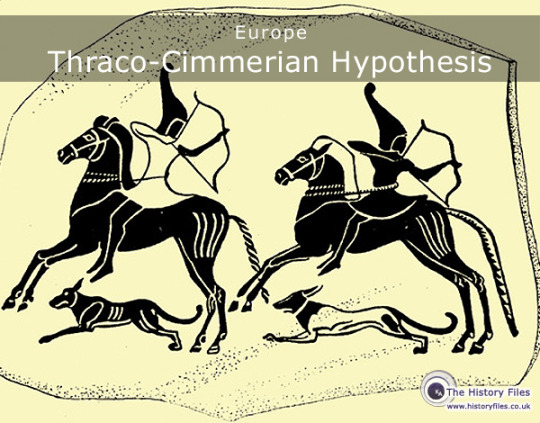
Thraco-Cimmerian Hypothesis: complications arise in reference to the Cimmerians of the Pontic-Caspian steppe when considering the so-called 'Thraco-Cimmerian Hypothesis', a rather controversial subject to say the least
2 notes
·
View notes
Text
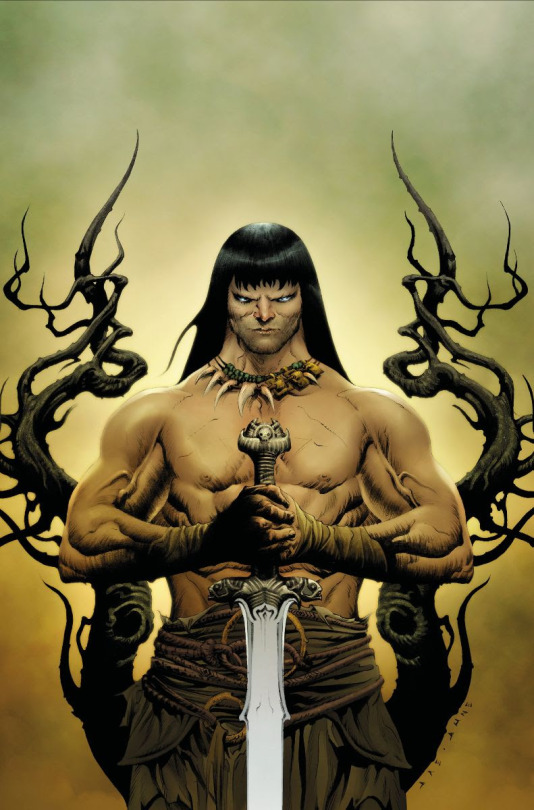
Conan the Barbarian no.1 • cover art • Jae Lee [Jul 2023] Ongoing
Years after the battle of Venarium, a weary CONAN returns to his homeland to seek rest and solitude. However, a mysterious scout rides in to warn the Cimmerians of an imminent threat on the march from the Pictish wilderness. Will CONAN and his new ally be able to hold off this new horde of invaders?
Writer: Jim Zub Artist: Roberto De La Torre
#Conan the Barbarian no.1#Jae Lee#Night Flight Comics#comic mail orders#Conan#NFComics#Conan the Barbarian#Cimmerians
5 notes
·
View notes
Note
Some more fun facts about Aethiopia in Greek mythology - but only the mythological one. Because I have been looking into Homer's Iliad and Odyssey, and in it the land is clearly supposed to be more mythical than "realistic" (like many of the concepts invented by the Greco-Roman historiography and geography, originally it was more of a legend or myth like anything with no real basis - just like how the "ocean" was originally a gigantic river encircling the world beyond the seas, instead of what we would understand today as an "ocean").
Why are Aethiopians named "the ones who look burned" ; "the ones with burned skin" ; "burned faces"? As you said above, this was the very old and ancient (and kind of racist indeed) belief by the Greeks that humans with darker complexion had such a skin color because they had been burned by the sun. But the very interesting thing is that in Homer's worldbuilding (and as such the old legends of Greece), Aethiopia was supposed to be a land of eternal good weather, endless summer and perpetual sun. Aethiopia was basically the land where the sun never stopped shining, and the land of light - and this was why, in the Ancient Greek mind, its inhabitants were "burned" by this constant sun.
And this, in Homer's tales, especially in the Odyssey, also worked for the "poetic worldbuilding" because the land of Aethiopia was a polar opposite to the land of the Cimmerians, another one of those "distant, liminal places at the edge of the universe". Because the Cimerians were supposed to live in a land of perpetual fog and mists, where shadows and darkness ruled.
This polar opposition is also noted in the two places' relationships to the gods. Because what the land of the Cimmerians is well-known for, in Homer's Odyssey, is its hosting of a gateway to the realm of the dead and Hades' kingdom. This was all why the Cimmerians were considered with dread and horror by the Greeks - not only did they live in constant darkness and in the worst weather imaginable, but on top of that they co-existed with the dead and literaly had Hades and his chtonian deities as their neighbors, and had open gates to all the monsters dwelling in the Underworld.
But the Aethiopians? They were pals with the gods! Their land of endless sunlight was seen as a form of paradise of earth (at least in Homer's epics), with the narrative regularly telling us about how the Olympian gods go have feasts and banquets in Aethiopia. Zeus is described as going partying with them in the beginning of the Iliad ; and in the opening of the Odyssey when all the Olympians are gathered only one is missing - Poseidon because he is having a celebratory meal with the Aethiopians. And this is actually VERY important because this means that (in the Homeric tradition at least), the Aethiopians were seen as blessed people, or as the last group of human beings who were still worthy of the gods' blessings and friendship - to the point the gods would literaly regularly eat at the same table as them, something which is only extreme-rare if not constantly denied to the Ancient Greeks themselves.
Mind you, as I say, not only is this all the "old" mythological perception, but also just Homer's tales here (I don't know more bout Aethiopia in other Greek writings). But still, among all the "fabulous and fabled people living in these magical lands beyond normal life", the Aethiopians were supposed to be the very positive deal, embodying the pole of light, summer, feasts, party, life and joy and immortality, as opposed to the dreaded Cimmerians of darkness, winter, death and the underworld and ghosts.
As for Homer describing the Aethiopians as living into the "dual extremes" of the world, it is quite funny - it happens at the beginning of the Odyssey, when Poseidon is described as feasting with them, and to highlight even more the "fabulous" nature of the people, Homer explains the Aethiopians live simultaneously at the "extreme-west" and the "extreme-east" of the world, in the lands of the rising sun and setting sun - and this duality lies in the fact that, as the poem says, the river Nile flowed right through the Aethiopian land. And for the Ancient Greeks, the Nile was one of the divisions between the East and the West. Coupled that with the belief that the Aethiopians lived at one of the "extremes" or "limits" of the world, and thus is explains that in the Homeric geography the "extreme-west" is everything west of the Nile", and the "far-east" everything east of it, and the Aethiopians were thought to literaly exist in opposite directions at the same time.
Hey quick question princess andromeda from the myth with Persus is from Ethiopia ? But then how come in paintings she is white ?
Quick question, long answer. Yes and no. It’s a little confusing. There are several parameters to this.
Aethiopia, an etymologically Greek name, is the name different Greeks gave to different places of the world. In the classical era (440 BCE), Herodotus called all the area south of the Sahara and the Nile as Aethiopia, making thus the most relevant description. Pindar however, a contemporary of his (~450 BCE), calls Aethiopia the region around Elam (Southwest Iran). Same as Hesiod, who did that in 700 BCE already. In ~500 BCE, both Scylax of Caryanda and Hecataeus of Miletus seem to agree Aethiopia is east of the Nile and expands throughout the Arabian peninsula all the way to the Indus Valley and the Indian Ocean. The first mention of Aethiopians is by Homer (~800 BC) who vaguely says that they lived in the extremities of the world, in the far east and west.
So as you see, the earlier back in time, the more generic and distant the term’s meaning is. Herodotus is likely the one who seals the association of Aethiopia with only sub-Saharan Africa and the country south of Egypt in particular.
The origins of Greek mythology precede all these writers. In general many historians suggest that the Aethiopia of the myth of Perseus and Andromeda was supposed to be in west Asia and perhaps somewhere around Israel and Palestine. Some believe it is Jaffa, Tel Aviv in particular. I am not totally sold on the explanations why. The point is however that Aethiopia’s geographical definition especially before Herodotus and even more before Hesiod was very vague and fluid. It seems it described places that in general were too hard for Greeks to reach, exotic.
The name itself can help us understand. Aethiopian means the one who looks burnt, smoked. From αίθω (aétho - burn) and όψη (ópsi - look, face). Now, this sounds low-key horrible in English but in Greek it’s not derogatory, but I have no better way to explain it. Ancient Greeks had written quite a few times about the attractiveness of the Aethiopians (whoever they were) so they didn’t associate the term with a repulsiveness like that of burnt flesh but just as the effect of the sun on their complexion.
In short, at least prior to Herodotus, Aethiopia was all the land inhabited by POC, even if that included large parts of Africa and Asia all the way to India. It did not include Libya (North Africa) and Egypt. This was not so much due to skintone (although it could be too - as North Africans can be way more white passing than people far from here believe) but because Greeks were well aware of these regions. Aethiopia was associated with exotic, distant places with darker people. This could be black people and brown people and all their various tones. Perhaps simply anyone who was noticeably darker than a Greek.
Now if we compare Jaffa (Andromeda’s Aethiopia) with modern day Israel or Palestine, then Andromeda and her parents could be medium brown or light brown or white / white passing.
However, I seriously doubt Ancient Greek art was concerned about skintone accuracy, simply because it was art made by Greeks and viewed by other Greeks. Everyone depicted usually followed the Greek standards of beauty. Besides, it’s a Greek myth, right? If we wonder about Andromeda’s complexion, then we should also wonder about her name! And her mother’s name! Why are they Greek? Well, simply, because it’s Greek mythology, which provides a genealogy where all progenitors are kin to Greek progenitors. Cepheus, Andromeda’s father, is brother of Danaus and has Argive ancestry (since this is a myth from Argos!). So if that’s true, Andromeda has Greek ancestry and might be white-passing because of that. But these is just exhaustive and in my opinion unnecessary nitpicking.
In Ancient Greek art complexion is almost always not depicted accurately but men are usually depicted as dark and women as fair because this was the beauty standard.

No this doesn’t mean Perseus was black and Andromeda white! It only shows the beauty standards of the time. Corinthian vase. Archaic period.
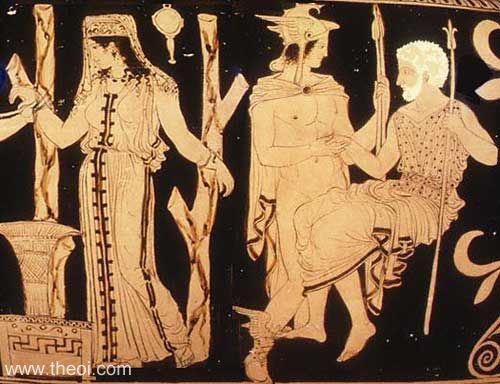
Andromeda, Perseus and Cepheus. Apulian vase, Classical Period. All look white or white passing.

Here although the skintone is the same, the artist makes Perseus blonde in order to stress Andromeda’s darkness through the haircolour. Zeugma, Roman period.
And… look at that!
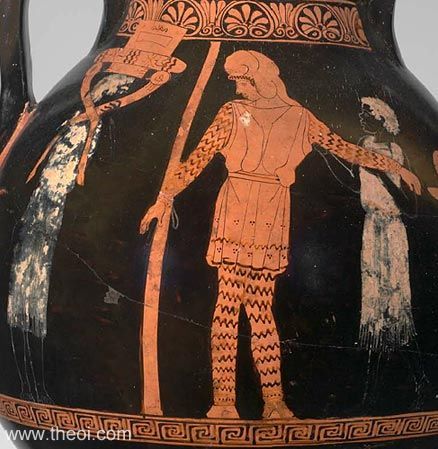
In this ‘mildly’ racist art, Andromeda is depicted as a dude as the tall white-passing person in the middle and she is getting tied for the beast by fellow Aethiopians who however look nothing like her. They are shorter and clearly African. Andromeda wears Phrygian, thus non-African clothing, but also nothing like the Greek clothing. This artist wanted to provide some diversity but apparently not for the beautiful princess lol Attic vase, probably Classical period.
Anyway so, Andromeda was either brown or black or white passing at most, because of Jaffa and the argive ancestry. Once Aethiopia - Ethiopia’s location had become more specific though, western artists depicting Andromeda as pretty fair of skin or blonde is misrepresentation with questionable motives. My opinion is that there is a wide range of looks Andromeda can be depicted to have, but not something that makes her look whiter or even just as white as Perseus.
#reblog#greek mythology#aethiopia#greek mythological geography#greek gods#homer#the odyssey#the iliad#cimmerians#fabulous lands#fictional geography
361 notes
·
View notes
Text

x
206 notes
·
View notes
Text

'The Frost Giant’s Daughter' by Mark Schultz.
#Art Of The Day#Art#AOTD#Mark Schultz#The Frost Giant's Daughter#Robert E Howard#Conan#Conan The Cimmerian#Conan The Barbarian#Comics#Comic Art#Illustration
455 notes
·
View notes
Note
i think cimmerian knocking me out with a pan and then kidnapping me and hiding me in his car and driving me hope and wrapping me into a burrito roll with a blanket and holding me in his arms while he watches tv and eating a burrito could fix everything in my life
.
149 notes
·
View notes
Text




Pocket size personnel
#dr iceberg#dr gears#dr cimmerian#researcher talloran#my-art#scp#scp fanart#🧍🏻♂️#I’ll do more interesting poses if I try this style again
200 notes
·
View notes
Text
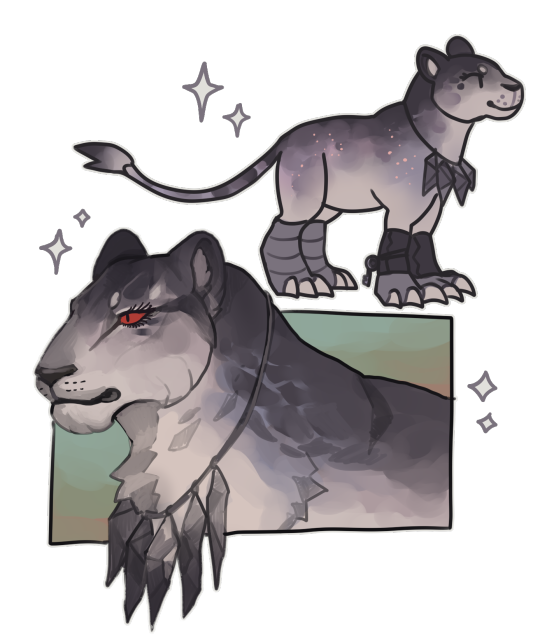
new lead lion for ld pride
481 notes
·
View notes
Text

HAPPY 119TH BIRTHDAY ROBERT E HOWARD
#robert e howard#rafael kayana#conan the barbarian#sword and sorcery#kull the conqueror#el borak#soloman kane#kull of atlantis#conan the cimmerian#red sonja#dark agnes#bran mak morn#steve costigan#kirby o'donnell#black turlogh
127 notes
·
View notes
Text


109 notes
·
View notes
Text

Savage Sword of Conan #53 Cover Art by Earl Norem
#Marvel#Comic#Comics#Conan#Conan the Barbarian#The Cimmerian#Savage Sword of Conan#Covers#Cover Art#Fantasy#Art#Earl Norem
99 notes
·
View notes
Text

good old Jeremiah “no bitches” Cimmerian.
an icon.
art requested by anon, thank you for request! If anyone has any other requests/ oddly threatening questions I’d appreciate ‘em.
#hamlet’s art |🌿|#scp foundation#scp fanart#scp fandom#scp#dr cimmerian#cimmerian#Thank you for the request
166 notes
·
View notes
Text
so many posts at once lol sorry i promise this is the last one im need to get all the old scp art out my gallery before it starts rotting and stinking everything up

#this isnt too old#jeremiah cimmerian#dr cimmerian#scp 939#scp fanart#scp#my art#ohh there he is hes so. hes so HOT!!!!!!!!!!!!!!!!!!!!!!!!!!!!!!!!!!!!!!!
188 notes
·
View notes
Text




163 notes
·
View notes
Text
Pre-963 + other doctor doodles
pre-963 doodles

And some other doctors I doodled





#scp fanart#scp 963#dr prince#scp fandom#scp#dr cimmerian#dr alto clef#dr iceberg#dr gears#dr rights#dr light#dr kain pathos crow#dr glass#dr gerald#dr king
222 notes
·
View notes
